Dive 5- Camera found, Mission Accomplished!
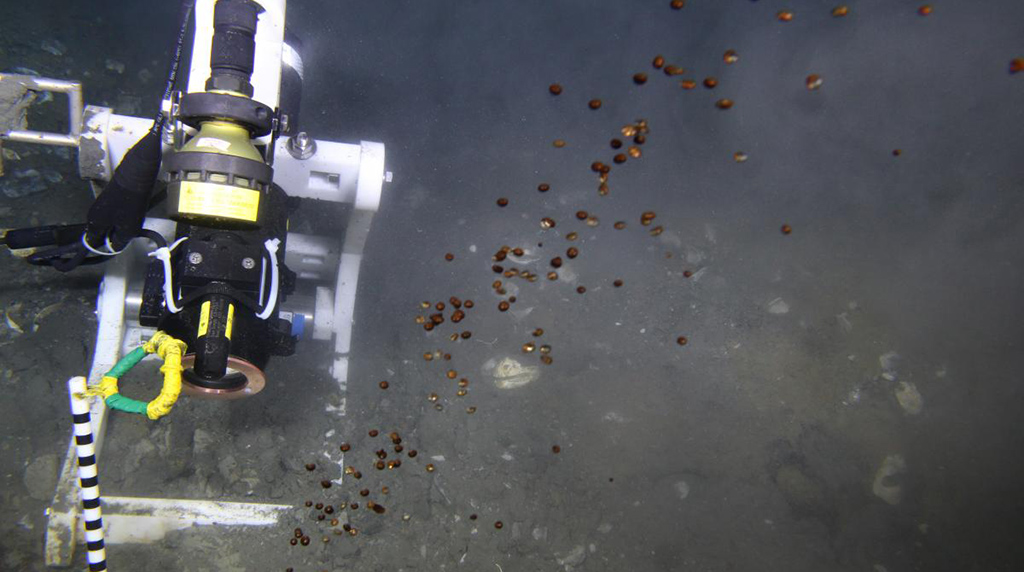
After countless hours of searching and with only 15 minutes to spare before returning to port, the time-lapse camera deployed by scientists from Florida State University was spotted. As we approached the lonesome camera, a large red crab could be seen guarding the erect structure. Recovery of the camera soon followed and FSU graduate student Caroline Johansen confirms it successfully recorded a natural seep releasing hydrocarbons to the Gulf of Mexico water column. Currently, we are sailing back in to port for an early morning arrival and long drives back to our home universities. All in the name of great oceanographic research!
Dives 3 and 4- Search and Recovery
The following was written by UNC Chapel Hill Undergraduate Tara Elizabeth Williams:
The ROV was launched for its third dive of the cruise this morning and a fourth after lunch. Each time I see the vehicle’s decent I feel a sense of amazement. While watching the video feed I saw jellyfish, corals, and even a squid. Seeing the ocean floor for the very first time is beautiful and amazing. I have hoped to see the creatures of the deep and this was a good glimpse. It is mind blowing to be seeing things I have read about and seen on TV.
The ROV mission today was to search for a missing camera and to hopefully recover a Pore-fluid Array (PFA) that was deployed approximately six years ago by scientists at Florida State University. The location was known but we were unsure if it could be fully recovered. Watching the video feed was stressful, everyone just wanted to recover the PFA on the boat safely and intact. When a cable attached to the ROV was finally secured to the PFA, we all worried that the PFA would be too heavy for recovery. Fortunately, the great crew and pilots of the ROV Global Explorer got everything safely on deck of the boat. To see a large object on the sea floor and then a few hours later back in the ship’s lab was one of the most amazing opportunities I have been a part of. Once the ROV was recovered we took water samples to later analyze back in our lab at the University of North Carolina at Chapel Hill for seawater nutrients.
It’s amazing to be a part of something that will hopefully improve the world. This trip has definitely reinforced my desire to peruse deep-sea research.
Dive 2-Time-lapse Camera Recovery
The following was written by UNC Chapel Hill Undergraduate Hansen French:
After a night of rough seas and transit to Mississippi Canyon 118 (MC118), we arrive on station early in the afternoon and begin our second dive of the cruise. Once again, the ROV is over the side as soon as possible! Our objective today is to locate a camera that was accidently dropped here a few months ago and to pick up other instruments deployed a few years ago. After several hours of searching with the ROV’s sonar, however, we are unsuccessful in our attempt to find the camera system. With the day almost over, we bring the ROV back up top for recovery of deep water samples collected from Niskin bottles attached to the vehicle. As we freeze the deep water samples to analyze back on shore, the crew secures the ROV on the stern- we’ll start early tomorrow morning to keep looking for the camera and recover the other instruments.
Dive 1-Lander Recovery and Time-lapse Camera Deployment
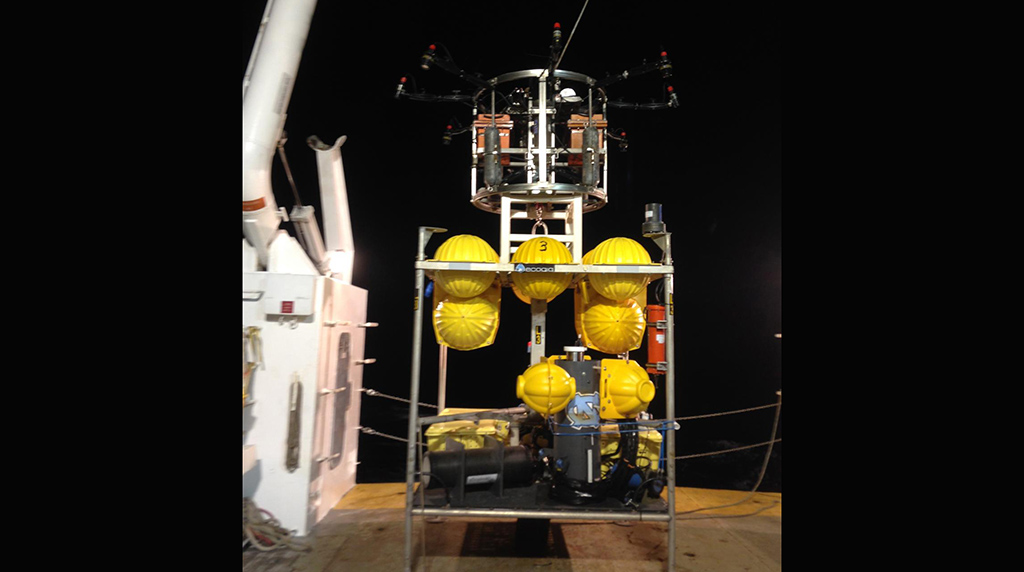
Today was our first dive of this cruise in the Northern Gulf of Mexico. The first objective of this dive included deploying a time-lapse camera developed by scientists at Florida State University. The positioning of the camera over a hydrocarbon seep could not have been more perfect thanks to the tremendous efforts of the Global Explorer ROV team. Following the camera’s deployment, the ROV began diligently searching for scientific equipment deployed in early October of 2013 on a large structure called a “lander.” Within a few hours, the large yellow floats attached to the top of the lander were spotted. Upon returning a sediment probe connected to the MIMOSA system, the weights holding down the lander were released. This release was followed by euphoric shouts as the lander slowly rose to the sea surface. Now begins the storage of MIMOSA samples and cleanup of CSA instruments.
Home Sweet Home
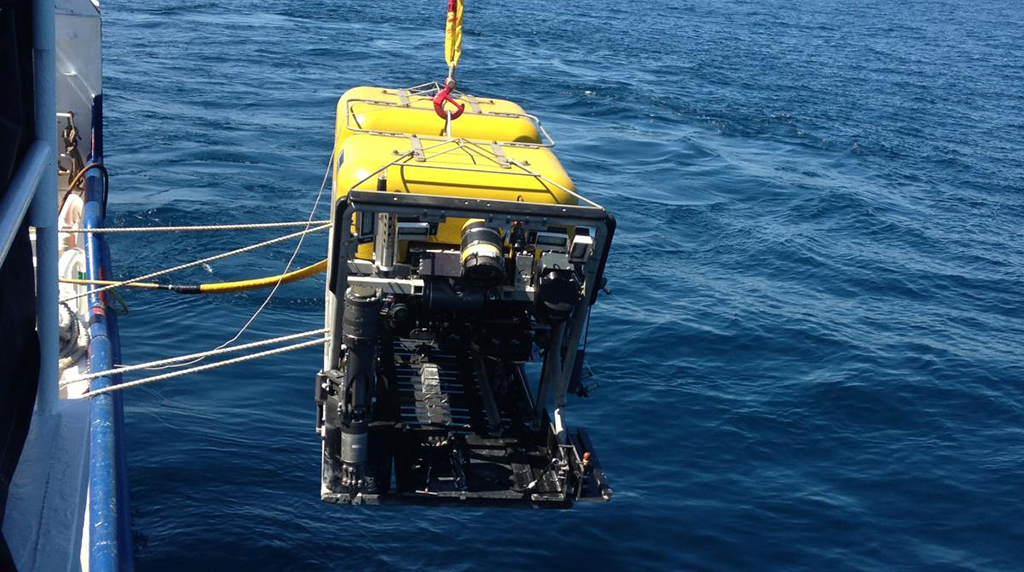
We have arrived at our target station, GC600! Final adjustments to scientific equipment from Florida State University that will be deployed to the sea floor tonight are being made. In addition, the research vessel and ROV are in the process of calibrating their navigation systems with one another and conducting other mandatory pre-dive checks. The weather is favorable and the seas are calm; good science is on its way.
Dunk Test
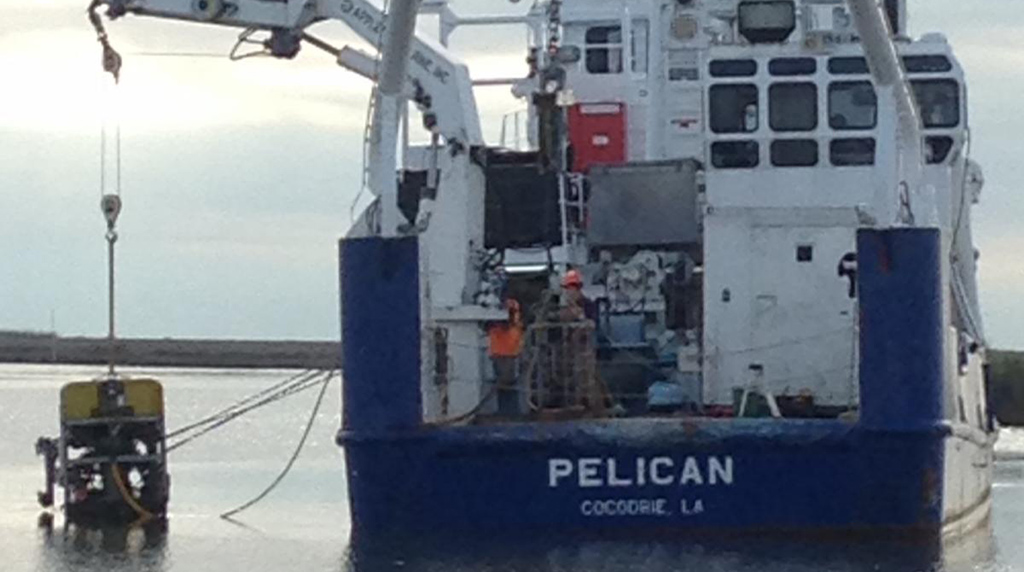
The crew and scientists aboard the Research Vessel (RV) Pelican are conducting their final tests prior to departure from port late this evening. Operators of the Remotely Operated Vehicle (ROV), the Global Explorer, simultaneously complete their final checks by submerging the ROV just below the sea surface. The results … all systems are a go and working great! In a few hours we begin our 16-hour voyage to our first dive site in the Gulf of Mexico, Green Canyon 600. Follow the science team and crew for the next week here and on Twitter at #ECOGIG and @DeepMicrobe.
March 6, 2014: Day 1
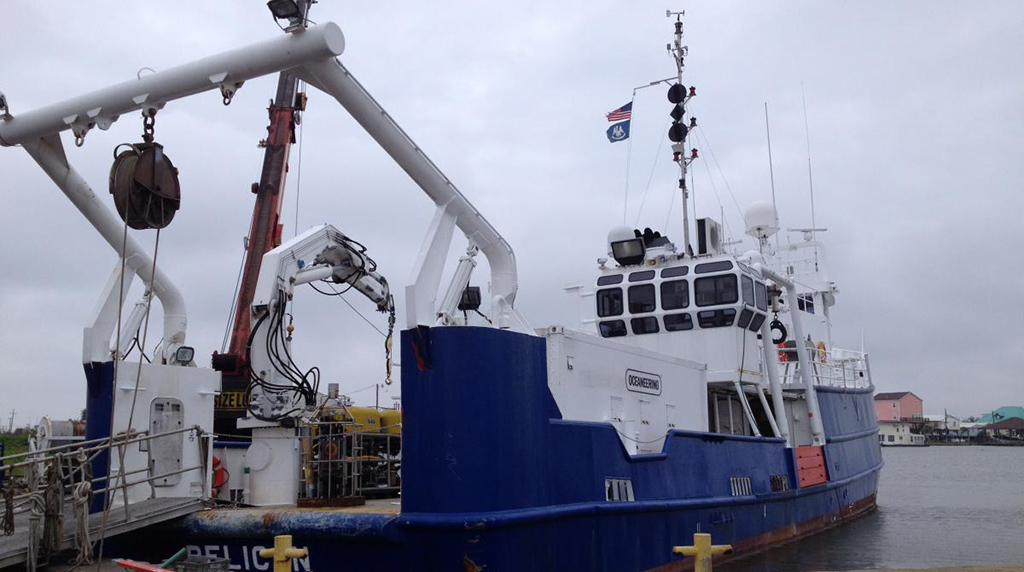
The day has finally arrived! After months of preparation and anticipation, Day 1 of this ECOGIG cruise is well underway. The ROV team and myself, the chief scientist, arrived in port in Cocodrie, Louisiana, this morning and began the process of transferring the ROV and all of her support equipment onto the ship. It's a little bit rainy, but everyone has sunny spirits as we try to arrange the jigsaw puzzle of equipment onto the deck. We will break for lunch soon, then continue the process until everything is on board and secure. The rest of the science team will be joining us over the next two days, including the students that will be contributing to this cruise blog, so stay tuned for more updates.
Getting Ready
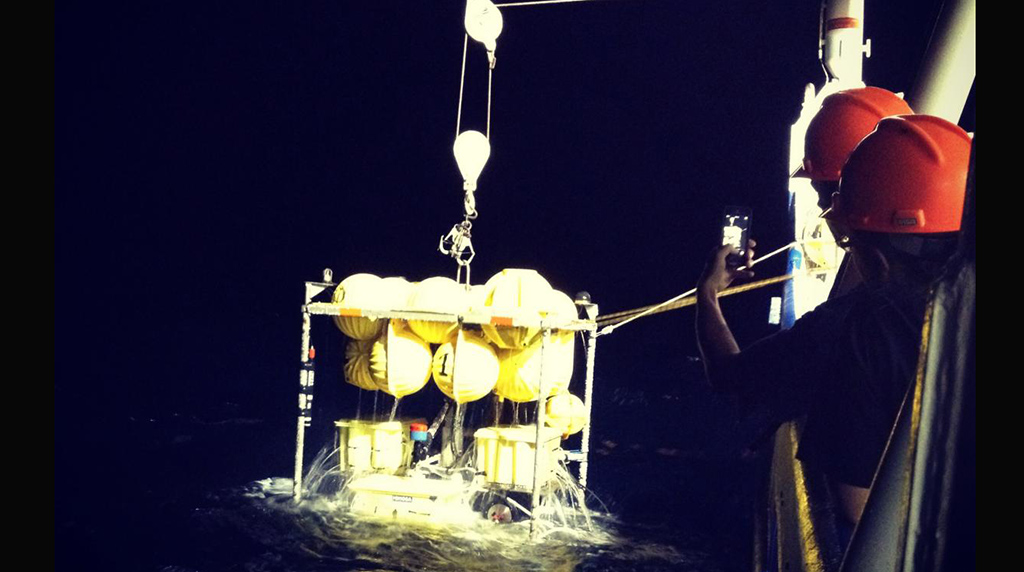
In a little less than a week, a team of scientists, students, and engineers from the ECOGIG consortium will be heading back out into the Gulf of Mexico to continue our research on the impacts of oil and gas release in deep sea environments. During the cruise, we plan to use the Global Explorer ROV to recover and deploy custom equipment for monitoring natural oil and gas seepage in the Gulf, as well as experiments designed to monitor the microbial degradation of oil and gas in sediment at the seafloor.
Our team will begin mobilizing the ship - the RV Pelican of LUMCON - on March 6, with a plan to head to sea by march 9. Check back here for regular updates from some of the students that will be on board, and follow along on Twitter at #ECOGIG and @DeepMicrobe. And wish us fair winds and following seas!

















 back to top
back to top